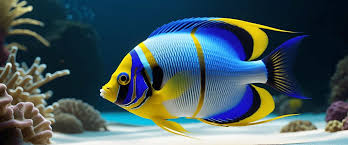The Dragon in Modern Chinese Literature: A Symbol of Cultural Continuity and Transformation

The dragon, an iconic and multifaceted symbol in Chinese culture, has long stood as a representation of power, strength, and mysticism. While deeply rooted in traditional Chinese mythology and history, the dragon has continued to captivate the imagination of writers, artists, and intellectuals in modern times. In modern Chinese literature, the dragon maintains its symbolic importance, yet it has also adapted and evolved to reflect contemporary issues, ideologies, and cultural shifts.
This article delves into the role and representation of the dragon in modern Chinese literature, analyzing how it has been reinterpreted and integrated into the stories, themes, and characters of contemporary works. We will explore the ways in which the dragon transcends its traditional roots and serves as a symbol of continuity and transformation within the ever-changing landscape of modern Chinese culture.
The Dragon’s Legacy in Chinese Mythology and Literature
To understand the significance of the dragon in modern Chinese literature, it is important to first revisit its historical and mythological origins. In Chinese culture, the dragon is a symbol of imperial power, natural forces, and divine protection. The earliest representations of dragons can be traced back to the Shang Dynasty (1600–1046 BC), where dragons were depicted on jade carvings, bronzes, and other ceremonial objects. Over time, the dragon became closely associated with the emperor, who was believed to embody the will of heaven.
In classical Chinese literature, such as the Classic of Mountains and Seas (Shan Hai Jing), the dragon appears as a mythological creature with various symbolic associations. It represents cosmic balance, the forces of nature, and is often linked to water, rain, and fertility. Dragons were also believed to be powerful protectors, capable of warding off evil spirits and bringing fortune and prosperity.
The dragon’s rich history in Chinese mythology and early literature provided a strong foundation for its continued presence in modern works, albeit with new interpretations and meanings.
The Dragon in Early Modern Chinese Literature
The late 19th and early 20th centuries saw a period of significant transformation in China. The decline of the Qing Dynasty and the rise of Western imperialism led to a cultural and intellectual awakening. The May Fourth Movement (1919), a time of political, cultural, and intellectual upheaval, gave birth to new literary forms and ideas. During this period, many writers began to question traditional Chinese values and sought to redefine the nation’s cultural identity in the face of foreign influence.
In early modern Chinese literature, dragons were sometimes depicted as remnants of outdated traditions, symbols of an oppressive imperial system. For instance, in works like The True Story of Ah Q by Lu Xun, the dragon as a symbol of imperialism was often criticized and mocked. Lu Xun, considered the father of modern Chinese literature, used irony and satire to highlight the shortcomings of traditional Chinese society and the decline of the imperial system. Here, the dragon was a symbol of a bygone era, emblematic of China’s struggle to modernize and embrace new ideologies.
However, even in these critical portrayals, the dragon retained its cultural significance, often used to symbolize the deep-rooted nature of traditional values and the challenges of reforming a society with such a rich, ancient history.
The Dragon in Post-Revolutionary and Contemporary Chinese Literature
With the establishment of the People’s Republic of China in 1949, writers found themselves navigating the complexities of socialist ideology and the desire to create a new literary tradition that reflected the ideals of the revolution. During the 1950s and 1960s, the dragon continued to feature in Chinese literature, but its symbolism took on new forms, shaped by the political climate of the time.
The Dragon as a Symbol of National Pride and Revolutionary Strength
In the aftermath of the revolution, the dragon began to be reimagined as a symbol of the strength and resilience of the Chinese people. In literature during the Maoist era, writers frequently used the dragon to represent the indomitable spirit of the Chinese nation, particularly in the context of its struggle against foreign invaders and colonial oppression.
In works such as The Red Detachment of Women and The East is Red, the dragon took on a symbolic role in the narrative of Chinese revolutionary struggle. It was depicted as a mythic creature that embodied the collective will of the people, overcoming adversity and restoring China to its rightful place as a powerful and respected nation. The dragon here was not merely an imperial symbol; it became a representation of the power and unity of the masses, a force for social change and transformation.
The dragon’s association with revolutionary strength was especially evident in literary works that focused on themes of resistance and national rejuvenation. In these narratives, the dragon’s mythic power was harnessed as a metaphor for the cultural and political revival of China after years of foreign domination and internal strife. It represented the hope for a future in which China could stand strong on the world stage, guided by the principles of socialism and national pride.
The Dragon as a Complex Character in Modern Fiction
In contemporary Chinese literature, the dragon has evolved into a more complex and multifaceted character, often representing both traditional values and the complexities of modern life. Writers of the late 20th and 21st centuries have revisited the image of the dragon, using it to explore themes of identity, transformation, and the tensions between tradition and modernity.
For instance, in works such as Mo Yan’s Big Breasts and Wide Hips, the dragon is both a literal and symbolic figure, representing the weight of Chinese history, the conflicts between tradition and progress, and the struggles of individuals trying to navigate a rapidly changing world. Mo Yan, who won the Nobel Prize in Literature in 2012, often uses folklore and traditional motifs, including the dragon, to ground his stories in China’s cultural heritage while addressing contemporary social issues. The dragon here is not only a mythical creature but also a symbol of the ongoing negotiation between China’s ancient past and its modern present.
The dragon also appears in the works of contemporary writers such as Yu Hua and Ha Jin, who explore themes of societal transformation, alienation, and the clash between old and new. In Yu Hua’s To Live, the dragon is emblematic of the deep-seated contradictions within Chinese society, reflecting both the country’s rich cultural heritage and its turbulent journey through revolution, reform, and globalization. Similarly, Ha Jin’s novels, which often focus on the experiences of Chinese immigrants, use the dragon as a symbol of the struggle for cultural survival and identity in a foreign land.
The Dragon and Globalization: Bridging Cultures in Modern Chinese Literature
In recent years, the dragon has also emerged as a symbol that transcends national borders, representing not only Chinese identity but also the global influence of Chinese culture. In a world increasingly interconnected through globalization, writers and artists have utilized the dragon as a way to explore China’s role on the world stage. The dragon’s depiction in literature has evolved from a purely nationalistic symbol to one that reflects China’s aspirations and challenges in the global context.
The works of authors such as the acclaimed writer and filmmaker Chen Kaige have incorporated the dragon as a means of exploring China’s engagement with the world, both in historical terms and in the contemporary era. Chen’s work, including his film Farewell My Concubine, features dragons and other traditional symbols to engage with themes of cultural exchange, identity, and the impact of globalization on Chinese society.
In contemporary literature, the dragon is often reinterpreted to reflect the ways in which Chinese culture is viewed and understood in the West. For instance, Chinese-American writers like Amy Tan and Lisa See incorporate dragons in their works to explore the experiences of Chinese immigrants, particularly their complex relationship with their cultural heritage and the challenges of navigating dual identities in a foreign land.
The dragon, as a cultural symbol, thus continues to serve as a bridge between the old and the new, the East and the West, embodying both the challenges and opportunities faced by China in its modern evolution.
Conclusion: The Dragon in Modern Chinese Literature as a Reflection of Cultural Change
The dragon in modern Chinese literature is a symbol of both continuity and transformation. While it remains deeply rooted in the cultural and historical traditions of China, it has also evolved to reflect the complexities of the modern world. Writers have reimagined the dragon in diverse ways, using it to explore issues of identity, power, revolution, and globalization. Whether as a symbol of imperial might, revolutionary strength, or personal transformation, the dragon remains one of the most potent and enduring motifs in modern Chinese literature.
As China continues to grow and change in the 21st century, the dragon will likely continue to evolve, reflecting the country’s dynamic cultural landscape and its place in the globalized world. The dragon in modern literature is more than just a mythical creature; it is a powerful symbol of resilience, adaptation, and the ever-present tension between tradition and modernity.
